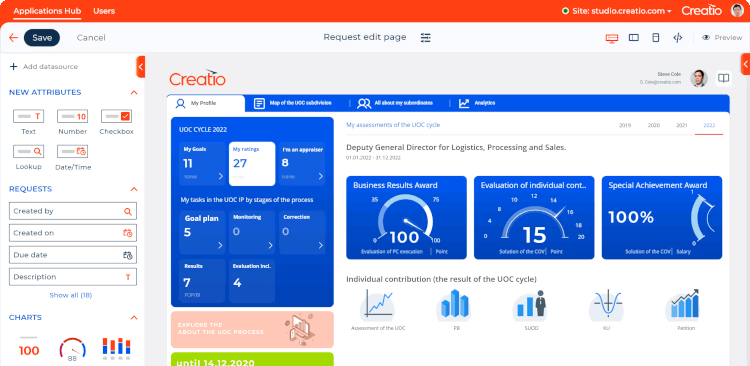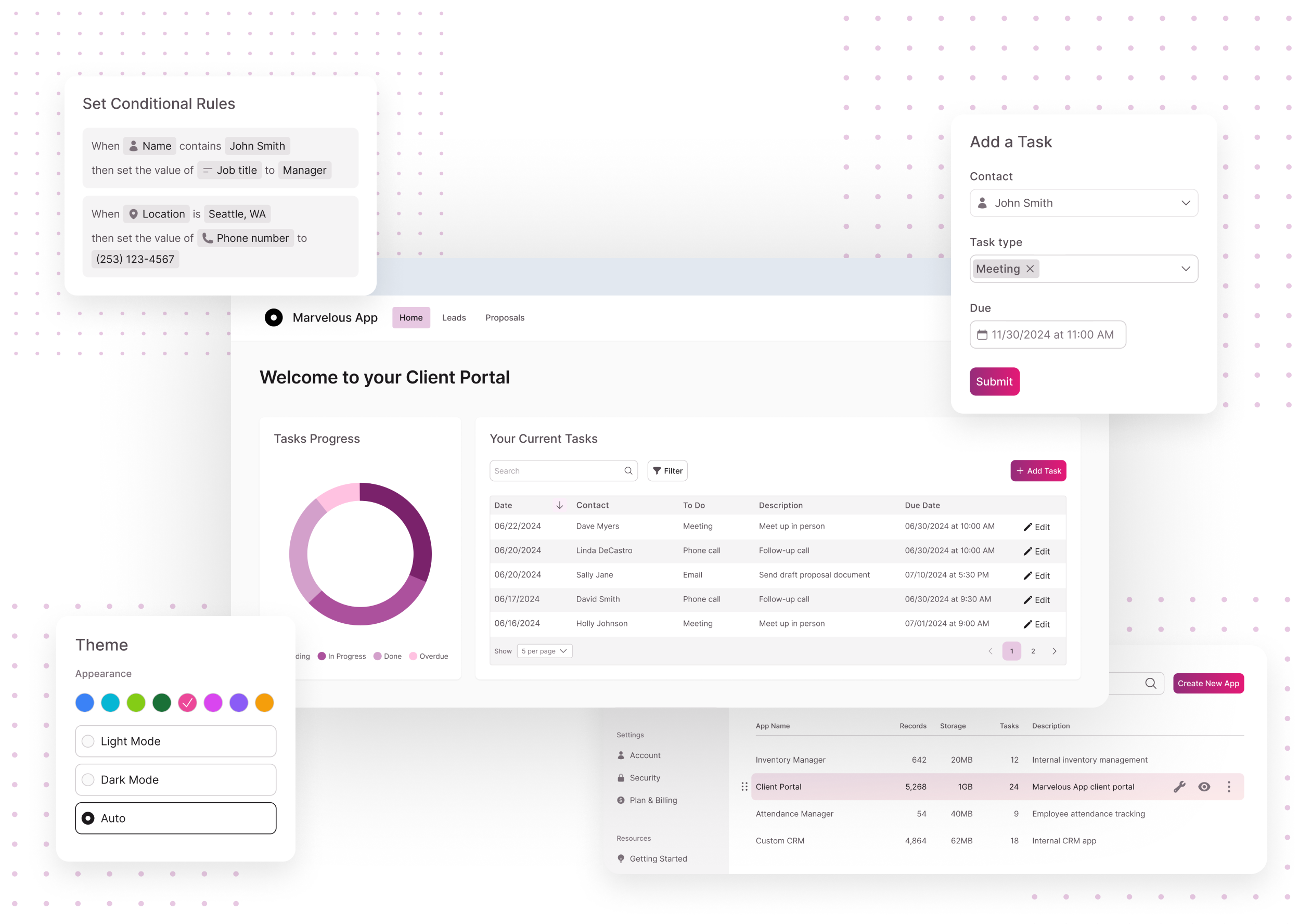Exactly How No-Code Equipment Simplify Open Platform Data Source Development for Every Person
Exactly How No-Code Equipment Simplify Open Platform Data Source Development for Every Person
Blog Article
Checking Out the Benefits of Scalable Databases That Need No Coding Abilities for Efficient Information Management Solutions
The appearance of scalable data sources that remove the requirement for coding abilities presents a transformative chance for organizations seeking reliable information management remedies. By making it possible for non-technical individuals to harness the power of information through intuitive interfaces, these systems boost accessibility and foster partnership across varied teams. Their cost-effectiveness and adaptability to evolving business demands can considerably streamline functional processes. As we consider the implications of such developments, it becomes crucial to check out exactly how they can improve the landscape of information monitoring and drive sustainable growth in a competitive environment.
Boosted Ease Of Access for Individuals
Improved ease of access for users is a crucial aspect of scalable databases, ensuring that information monitoring systems are instinctive and user-friendly. In an era where data-driven decisions are vital, accessibility enables a bigger variety of customers, consisting of those without considerable technical know-how, to engage with database systems efficiently. This democratization of information accessibility promotes boosted cooperation throughout departments, encouraging employees to draw out understandings and make notified decisions.
Straightforward interfaces, such as drag-and-drop features and visual information representation, streamline complicated information interactions. These improvements lower the learning curve associated with conventional database management, enabling users to focus on leveraging data instead of facing technical intricacies. Scalable data sources commonly include adjustable control panels and real-time analytics, providing users with prompt understandings customized to their details needs.

Cost-Effectiveness and Resource Savings
Reliable data management not only hinges on availability however likewise on cost-effectiveness and resource savings. Scalable data sources developed for customers with no coding skills dramatically decrease monetary burdens normally connected with typical database management systems. By removing the demand for specialized shows knowledge, organizations can allot their resources extra efficiently, focusing funds on core business tasks as opposed to considerable training or employing experienced workers.
Additionally, these data sources usually make use of cloud-based services, which even more reduce costs connected to hardware and upkeep. Organizations can scale their data source services according to their needs, preventing the expenses incurred from over-provisioning resources. This flexibility suggests companies can adjust to changing needs without incurring unneeded costs, resulting in significant lasting savings.
In addition, easy to use interfaces improve data entrance and monitoring processes, decreasing the moment invested in management jobs. This performance translates into labor price financial savings, allowing groups to focus on calculated efforts as opposed to regular upkeep. On the whole, adopting scalable databases that call for no coding skills cultivates a much more cost-efficient approach to information administration, making it possible for organizations to optimize their resources while preserving high levels of operational performance.
Improved Partnership Across Teams

Moreover, scalable databases promote smooth interaction among employee. With straightforward interfaces that require no coding skills, staff members can conveniently produce, customize, and share reports or control panels tailored to their specific demands. This democratization of data encourages non-technical individuals to contribute understandings, enhancing the collective setting.
Furthermore, these databases sustain simultaneous accessibility, allowing multiple users to deal with the very same dataset concurrently. This attribute enhances productivity, as teams can participate in joint data analysis without the risk of version control concerns. The capability to leave comments or notes directly within the data source better promotes dialogue and clarifies information analyses.
Streamlined Information Monitoring Processes
In today's data-driven environment, companies identify the requirement of structured data management processes to maximize performance and accuracy. By leveraging scalable databases that call for no coding abilities, companies can streamline their information handling and reduce the complexities normally connected with traditional data source systems. This accessibility encourages non-technical customers to involve directly with data, assisting in quicker decision-making and decreasing dependence on specialized IT workers.
Structured data monitoring processes enhance workflow by automating regular tasks such as information entry, recognition, and coverage. Automated data combination published here makes sure that info from different resources is accumulated seamlessly, eliminating silos and fostering an unified sight of critical company metrics (no-code). Easy to use user interfaces permit workers to manipulate data conveniently, allowing them to generate insights that drive strategic efforts without the need for extensive training.
This performance not only accelerates operational processes however also reduces the possibility for human mistake, guaranteeing that data continues to be reliable and exact. Inevitably, structured information management processes via scalable databases bring about enhanced productivity, permitting organizations to concentrate on core activities while guaranteeing that their data monitoring practices are effective and efficient.
Scalability for Growing Businesses

For increasing enterprises, the capability to scale up or down is crucial. A scalable data source can take care of an influx of information produced from new consumers, products, or services, making certain that business operations continue to be nonstop. These data sources supply the ability to handle peak lots effectively, which is my link important during periods of quick growth or seasonal spikes.
Furthermore, many scalable data source remedies are made with easy to use interfaces that need no coding abilities, equipping non-technical team to take care of data efficiently (no-code). This democratization of information monitoring permits organizations to allocate resources tactically and decrease dependency on specialized IT workers
Inevitably, embracing a scalable data source not only enhances functional performance yet likewise cultivates a setting where services can introduce and advance without the restrictions of typical data source systems. This versatility settings companies for long-term success in today's affordable landscape.
Final Thought
In final thought, scalable databases that require no coding skills provide substantial advantages for efficient data administration. By simplifying information administration processes and providing scalability for growing companies, such options allow organizations to adjust to altering demands efficiently.
Boosted access for customers is a crucial element of scalable databases, making sure that information administration systems are user-friendly and instinctive.Straightforward interfaces, such as visual information and drag-and-drop functions representation, streamline complex information communications. Generally, adopting scalable data sources that call for no coding abilities promotes a more economical strategy to information monitoring, making it possible for companies to maximize their resources while maintaining high levels of functional effectiveness.
By leveraging scalable databases that require no coding abilities, organizations can streamline their information handling and lower the intricacies usually linked with standard data source systems - no-code.Structured information management processes boost process by automating routine tasks such as data click for more entrance, recognition, and coverage
Report this page